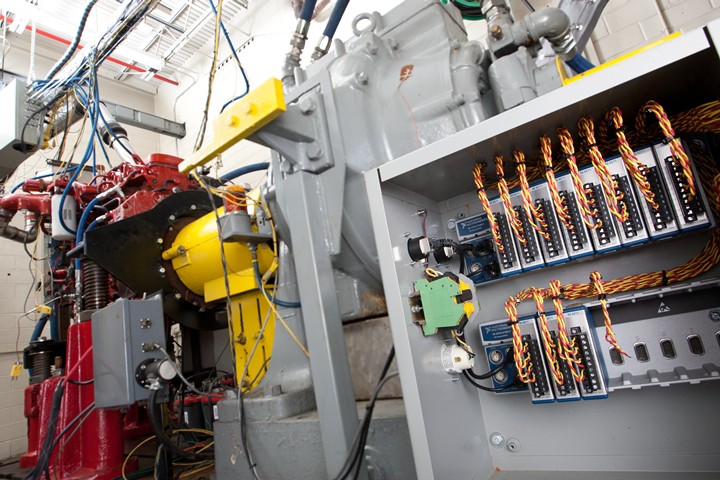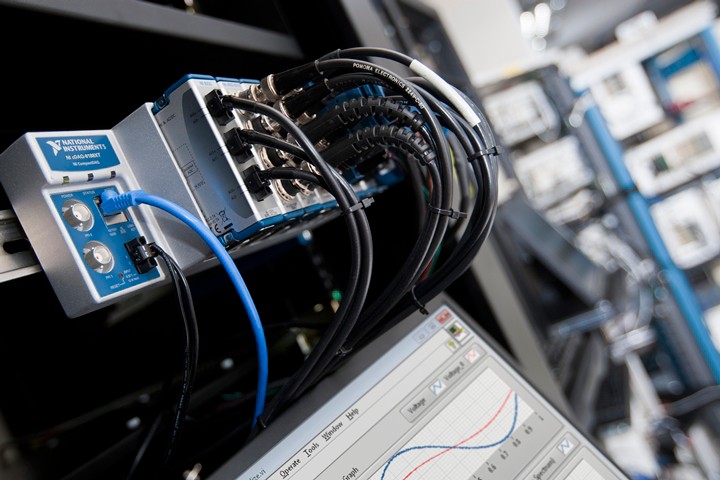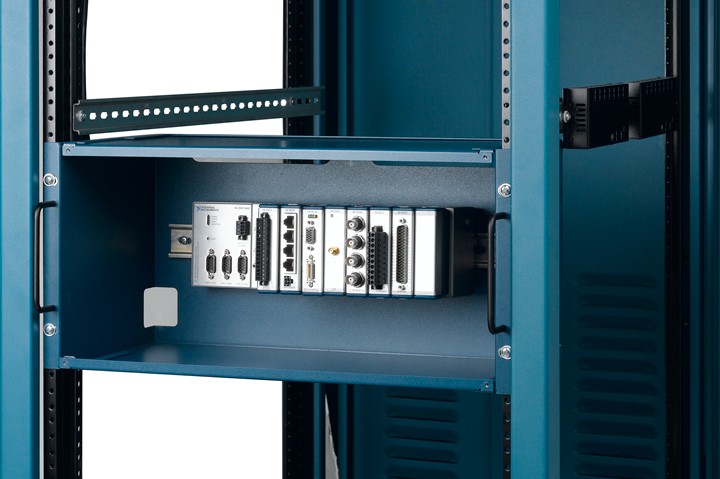How to Choose the Right Mounting Configuration
Overview
Contents
Panel Mounting
Panel mounting secures your hardware to a wall or flat surface. It requires the precise placement and drilling of screws to properly secure the hardware; therefore, it is not the most convenient solution for projects with frequently changing hardware requirements. Also, you should consider whether you need to panel mount your other accessories such as power supplies. Panel mounting is the best mounting configuration for high shock and vibration applications. Hardware designed for rugged environments often features built-in holes for panel mounting. You must use screws with the correct length and threads to fasten your hardware to the panel. If you are designing a custom panel or integrating new hardware onto an existing panel, consult the hardware manual or documentation on sizes and clearances to select the proper spacing.
Figure 1. Panel Mounting Configuration in Vibration Test System
DIN Rail Mounting
In DIN-rail mounting, a clip attaches hardware to a standard DIN rail, which is usually fastened to an enclosure or a rack. Of the three different DIN-rail standards, the 35 mm wide configuration is the most prevalent. This type of mounting is commonly used in industrial control applications. It is convenient because many manufacturers provide devices including Ethernet switches and power supplies that are compatible with this standardized footprint. DIN-rail mounting is not as sturdy as panel mounting, but it is easier to configure because it requires fewer holes and screws. You can use it to mount hardware in different configurations as your application needs change simply by clipping the device into or out of place. DIN-rail mounting saves time when you need to replace a component because you do not have to redesign a mounting panel and drill additional holes for new hardware.
Figure 2. DIN-Rail Mounting Configuration in a Lab Setup
Rack Mounting
Rack mounting houses hardware in a standard 19 in. wide equipment rack. These racks can be enclosed or have an open frame. Space is usually allocated based on an integer number of rack units (U), where one unit equals 1.75 in. in height. Mounting hardware in a rack is useful for storing a large amount of hardware in a limited amount of floor space. You can fasten hardware directly to the posts using screws or bolts at the front and back of the rack. However, this setup is not ideal for hardware that needs to be accessed frequently. To address this limitation, hardware is often mounted onto rails that slide into and out of the rack. This is also useful for accessibility during troubleshooting and maintenance.
Figure 3. DIN-Rail Mounting Configuration in a Lab Setup
Desktop Mounting
Desktop mounting provides ease of use for labs or regularly changing test setups. The simple rotation of the hardware above the desktop allows for easy removal of I/O modules and facilitates wiring to connectors.
Related Links
NI provides panel, DIN-rail, desktop, or rack mounting accessories for CompactRIO and CompactDAQ systems. Refer to the following links for more information on mounting CompactDAQ and CompactRIO hardware.
- Learn more about CompactDAQ controller and chassis mounting accessories
- Review dimensional drawings for NI hardware so that you can finalize mounting plans
- Find installation instructions for specific NI mounting kits


